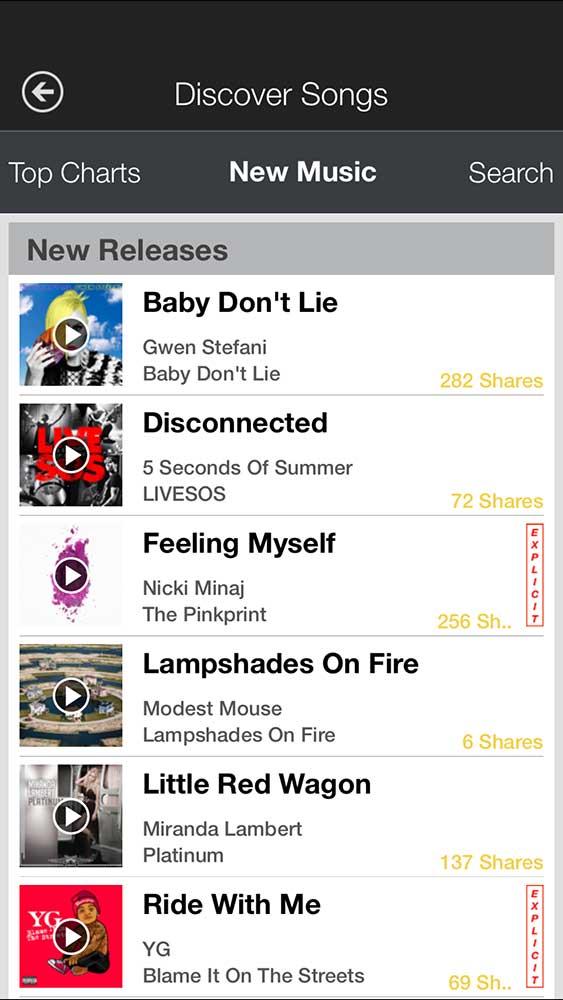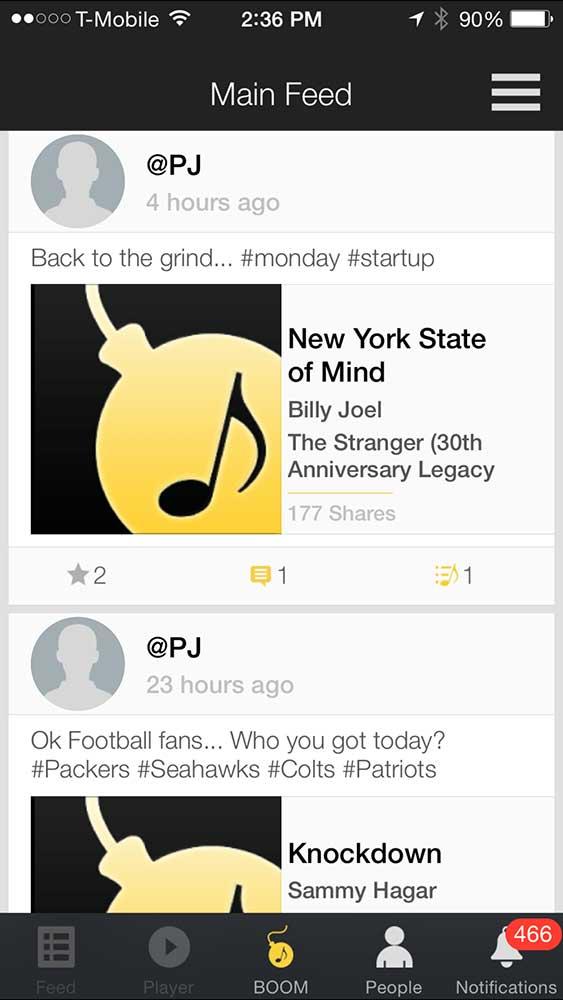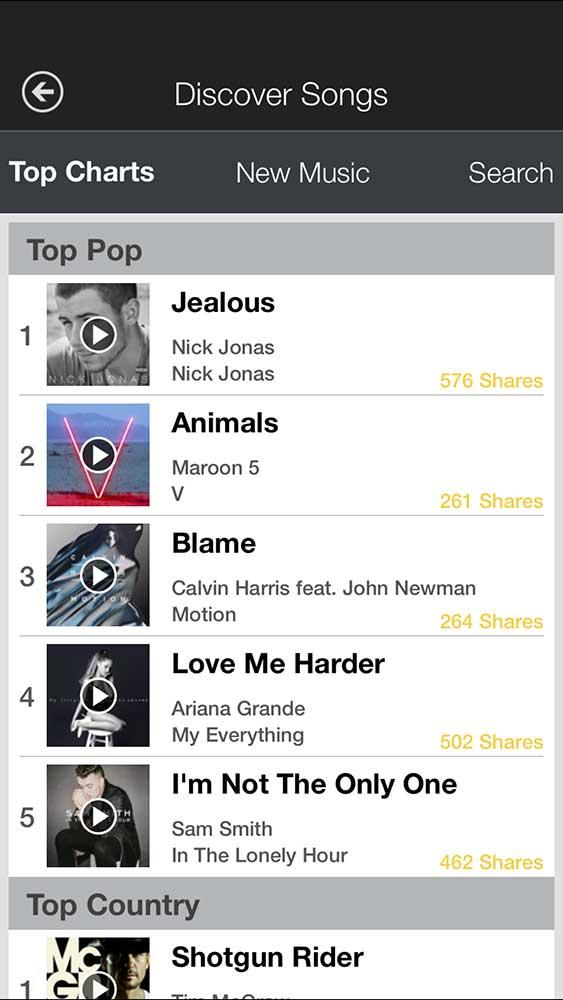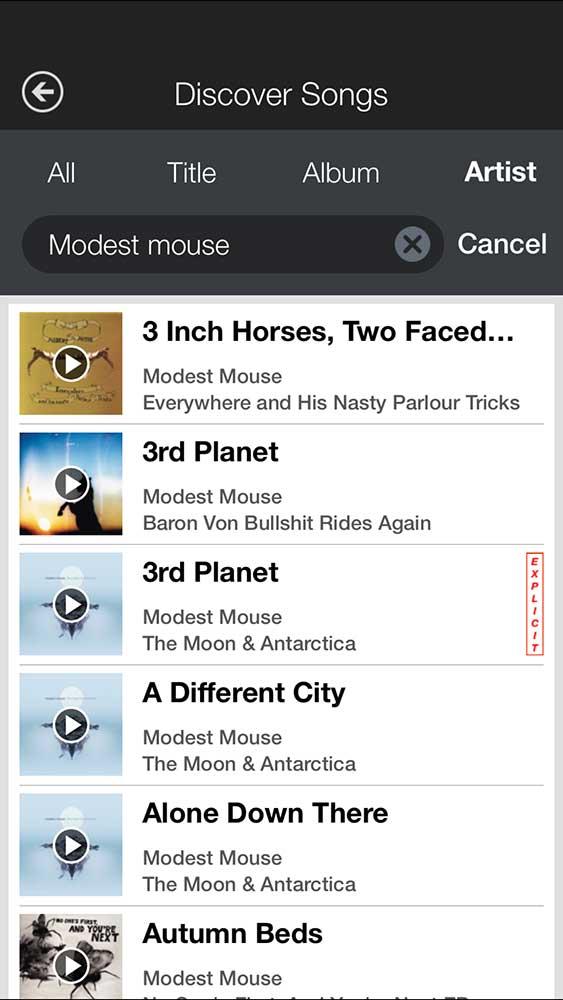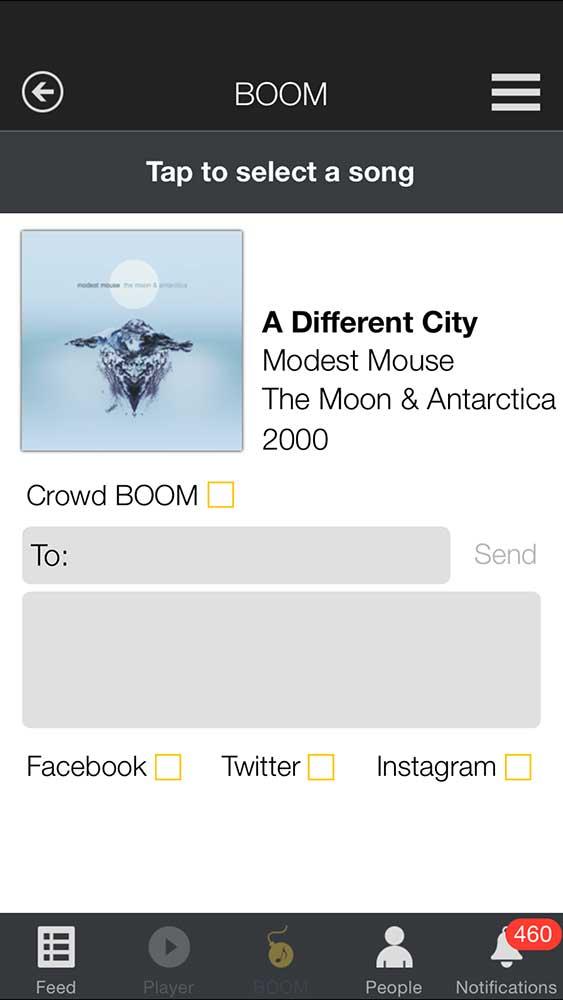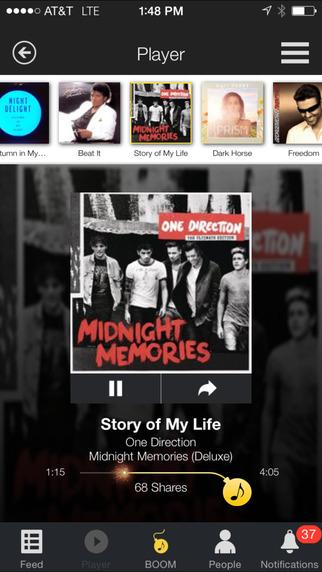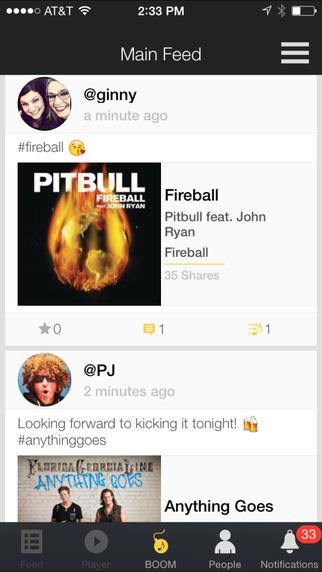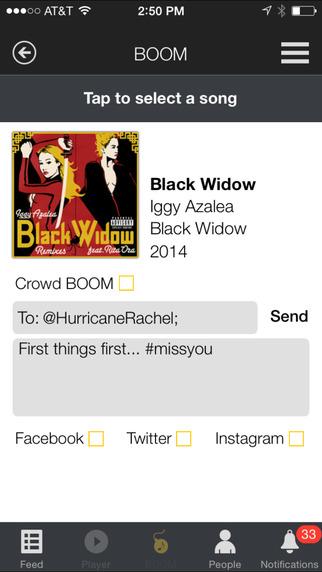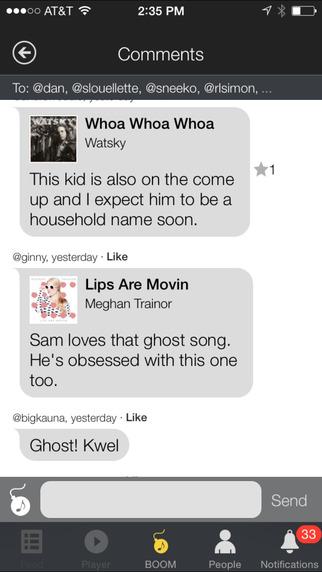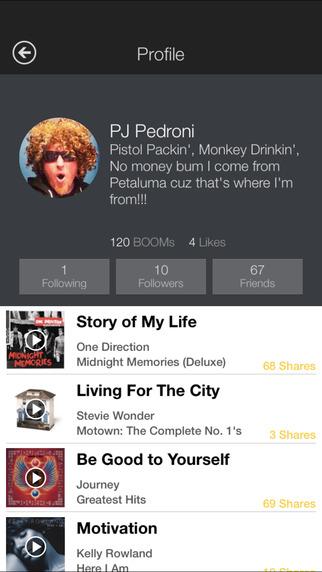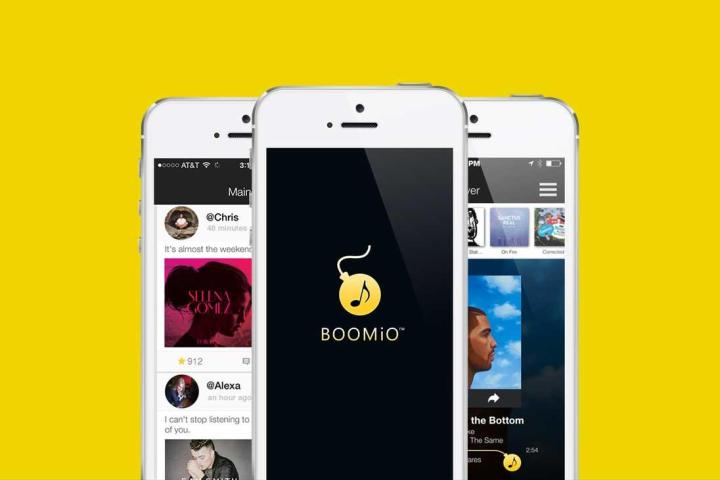
After years of struggling to make music a more social experience in the age of Spotify and Pandora, Randy Kath, PJ Pedroni, and a few friends set out to build an app that focuses on the social side of music.
“There needs to be more sharing and talking about music.”
“The transformation of music for consumers has gone from a communal experience where you listen to the radio, you hear a disc jockey, you listen with friends, and talk about it, to you download your content to put it on your phone, you put in your headphones, and you don’t talk to anybody,” Kath told Digital Trends. “We thought, ‘There needs to be more sharing and talking about music.’”
That’s the premise behind Boomio, a recently released iOS app. Boomio is a social, music-sharing platform that allows users to send songs to their friends and followers. Users can respond to each post with comments, likes, or add more songs to create themed playlists. Alternatively, artists can use the app to promote their music and engage with listeners directly. But there’s a catch that makes Boomio different than most social music sites: you only get one play for free.
Every song is licensed with the record label, and users get one full replay, but if they want to hear it again, they’ll have to either share the track or buy it. The app is supported by several major record labels, so it launched with millions of songs. But the format is especially appealing to lower-profile musicians looking for a way to attach some monetary value to their art form.
‘Boom’ a song to a friend and talk about it (‘Boom’ it to me)
As with most apps, the first step is to sign up for an account with your name, username, birth date, gender, zip code, email, and password. You can even add a short Twitter-esque bio and profile picture, if you want. Once you’re set up, you can look for people you know, invite your friends to join, or simply follow strangers as you would on Twitter.
Before you start sharing songs, you’ll probably notice a recurring bomb theme, ala Mission Impossible: “This message will self-destruct.” When you listen to a track, the bomb’s fuse ticks off the minutes until the song ends, at which point, the bomb explodes (the app has crazy, missile explosion sound effects each time someone shares a song with you). When you share a track, it’s called a “boom,” and when you share a playlist, it’s a “boomlist.”

It’s relatively easy to browse through Boomio’s music library by artist, song name, or album title. You can preview tracks for 20 to 30 seconds, before you’ll be prompted to buy it or share it on Boomio. Then, once you find the track you want to share, you hit the “Boom” button. After you boom the song, you can listen to the full track one time. In this way, the app incentivizes song purchases and sharing between friends, which is something that thrills both the record companies and the artists involved with the project.
You can boom a song to a friend, a group of friends, or simply send a crowd boom to all your friends and followers at the same time. Boomio also gives you the boomlist option, for when you want to share a bunch of tracks at once. Your friends can then listen to the tracks and comment, like, or re-boom your post. The Founders call it “friend-sourced music,” and say Boomio helps listeners discover music that’s much more personalized and suited to their tastes than anything Pandora offers.
The main feed basically looks like the Facebook News Feed, where you’ll see all your friends’ posts in one place. You can scroll through at your leisure and discover new music, or start a conversation with your friends, followers, and favorite artists. In the likely event that your friends don’t have Boomio yet, you can also send your boom to Facebook or Twitter via a link. Any comments your friends make on other social networking sites also cross over into the Boomio post in the app.
The creators of Boomio even built a direct messaging system into the app, so you and your friends can discuss the music you just shared. These group threads facilitate conversations about the music itself, related tracks, concerts, and so on. Boomio’s creators imagine that indie artists will use the messaging system as a way to engage with listeners and inspire them to buy more music.
Sharing music is important for people and artists
In a sense, the difficulty new artists face when sharing music was what made the founders wonder, “How do you share music today?” They polled their friends, and found that no one had a viable solution. Everything involved linking from Facebook, to Twitter, to Spotify, to iTunes, to the artist’s website, and so on and so on.
After clicking through a link or two, most people just give up. “You think, ‘How much do I really want to listen to this song?’” Pedroni said. “Discovery is difficult for people and artists – music sharing is not social these days.”
“There’s no disc jockey promoting new songs, it’s just social media.”
Pedroni shared a prime example of the difficulty both fans and artists face when it comes to promoting music.
“It’s difficult for artists to promote their music. There’s no disc jockey promoting new songs, it’s just social media,” he said. “I had a friend who was in a rock band and then they broke up and got back together last year to record a new record. They asked all their fans to listen on this radio station at a specific time that night, and I thought, ‘What year is this?’”
Boomio aims to make it simpler for artists to share new tracks, concert dates, album info, and so on. Artists will also have access to a dashboard to see which songs users are listening to and sharing the most.
That’s what has record labels and indie artists signing up for the service, even though its user base is still small, given the fact that it launched in mid December of 2014. Boomio gives artists a chance to monetize their music, and make a lot more money than they’d ever rake in from Spotify or other streaming services.
In a sense, Boomio is a direct response to what some believe is the devaluation of music, thanks to free downloads and streaming services. Most notably, Taylor Swift wreaked havoc on Spotify by pulling her music from the service. The result? Record-breaking downloads. It seems that users will pay for music if they really, really want it, and can’t get it elsewhere.
While Boomio may not be able to corner people into buying tracks from mainstream artists whose stuff is on Spotify, it has a good chance of convincing users to buy indie artists’ music. The idea is that even if users don’t buy the songs they boom, at least they shared them with friends who may end up purchasing the whole album.
Boomio is working on an upload feature for indie artists who aren’t with any label supported by the service. That way, regardless of whether they’re signed or not, artists can share their music with fans. It’s a way for artists to say, “Hey, here’s my latest song. If you love it, give me a dollar. If you don’t want to buy it, share it with your friends anyway.”
Boomio’s creators are busy adding new songs and signing as many record labels as possible to bolster their already large catalog. The founders say they aim to surpass 20 million songs in the not-so-distant future. Boomio also hopes to partner with Spotify and other popular streaming services.
Currently, the app only works with iOS devices, buy don’t worry Android fans, there’s an Android app in the works, which should launch relatively soon. In the meantime, those with Apple products can check out the iOS app in the App Store.
Editors' Recommendations
- Apple Music vs. Spotify: Which music streaming service is the best?
- How to hide apps on your iPhone
- How much is Apple Music, and how can you get it for free?
- These are the apps people use the most on in-flight Wi-Fi
- Spotify Wrapped 2023: how to find your 2023 music stats
